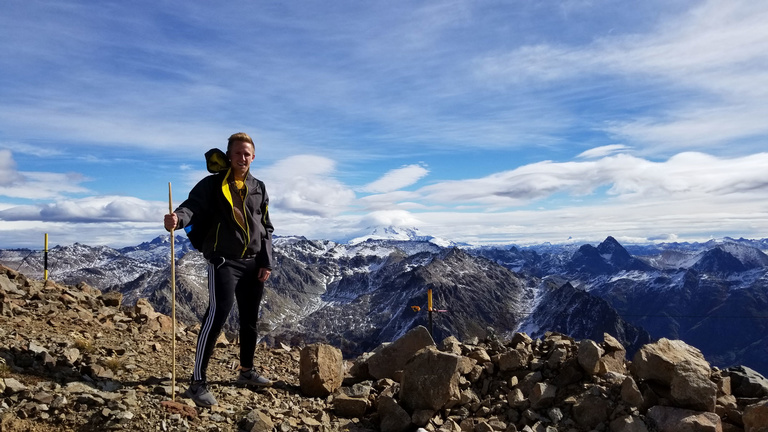
At the peak of Cerro Catedral. In the background is Cerro Tronador, a mountain named after the thunder-like noise it makes when chunks of the glacier on it break and crash to the ground.
Uruguay is geographically located in a fantastic part of the world for travel. It’s easy to travel not only to Buenos Aires, but also to Brazil, and Argentina as a whole. During my spring break in Uruguay, I decided to travel to Bariloche, Argentina, for a week with three other friends. It was nothing short of amazing. Located in Northern Patagonia, it is a small city surrounded by lakes and the Andes Mountains. I remember pulling into the apartment we stayed in - the building was right on the beach of a glacial lake with the bluest water I had ever seen with snowcapped mountains in the background.
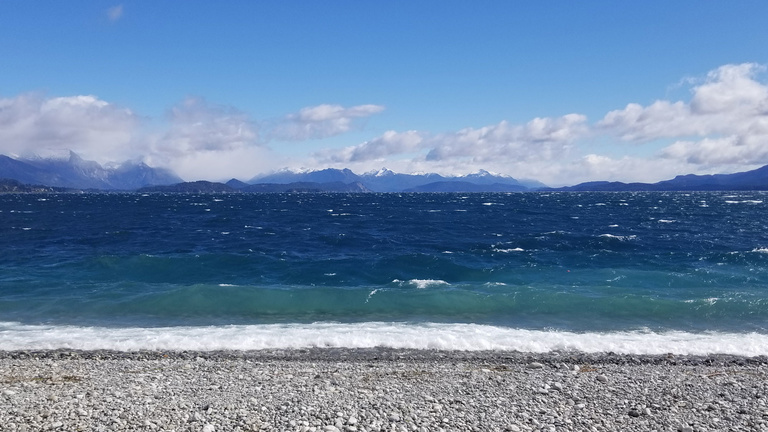
The beach where our apartment was located. Look at that water!
The first day was spent biking around what’s called the Circuito Chico. It’s a 23-mile loop going through the mountains and around some lakes with various viewpoints and places of interest along the way. It took a few hours to complete, and we frequently ran into a couple of French Canadians along the way that rented bikes at the same place. Afterward, we returned the bikes and walked up Cerro Campanario, a smaller mountain surrounded by lakes. They say it has one of the top five views in the world which is an argument that I would support. We stayed up there until the sun went down and took tons of pictures before stumbling back down the mountain in the dark.
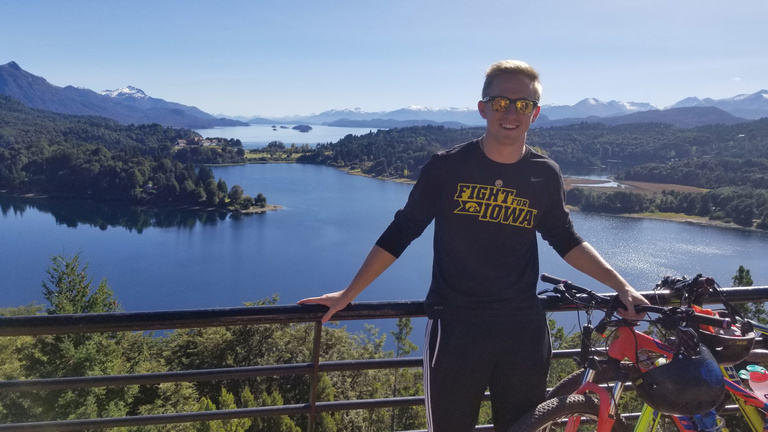
Representing Iowa on the Circuito Chico.
The next day we trekked out on Cerro Catedral, the local ski resort. Because there was no snow yet, there was only one chairlift operating for hiking and mountain biking. We took it about halfway up the mountain and spent the rest of the time climbing to the top. We had first aimed just to hit the ridgeline that we could see from the top of the chairlift, but once we got there, we ate the sandwich lunch we had packed and decided to continue up the ridge as long as we had the time. Popping over the top of the ridge was incredible for two reasons: the views became much more grandioso but so did the wind. It was the type of wind that you could lean into and not fall over. We pushed our way to the top of the peak where the non-operational chairlift rightfully called “Clouds” would take the braver skiers in the winter. From there, we had a 360-degree view of the surrounding mountains and lakes. We made our way back down the mountain and returned to the little ski village at the bottom. While we waited for the bus, we happened to run into the same two French Canadians who ended up paying for our way back to downtown Bariloche because we had run out of money on our bus card.

Summiting Cerro Campanario with our two new Canadian friends.
On the third day, we had no plans, walked into a tourism office, and spontaneously signed up for a ziplining tour. They picked us up in an hour and took us to a remote little outpost off a dirt road. From there, we hopped in the trunk area of a Jeep-type vehicle where there were a couple of benches. They took us on what seemed like logging roads until we got to the starting point of the tour. We zipped through the trees on the side of a mountain for the next 45 minutes to an hour and took the vehicles back down the rest of the way. We were greeted at the bottom again by a little gang of dogs, two of them being big, fluffy Saint Bernards.
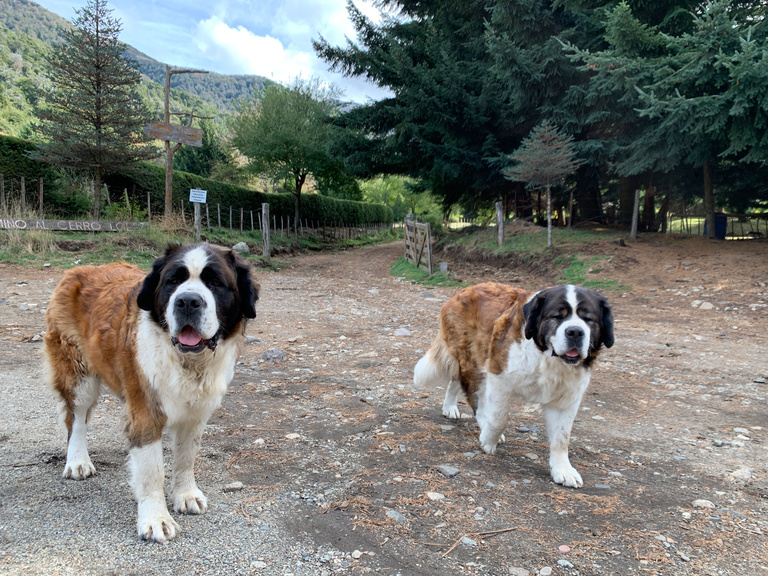
The cuties who met us back at the bottom of the mountain.
While we were in the tourism office the day before, we booked a trip on large catamarans to visit the Arrayanes Forest and Victoria Island. We arrived at the port and boarded the ships. We took them through Lake Nahuel Huapi, a large glacially fed lake on which Bariloche was founded. The boat had an open-air upper deck and walkways around to the bow of the ship. Of course, we had to take Titanic-style pictures as we passed through the deep, cobalt blue water. We arrived at the Arrayanes Forest and did a quick walk around. It’s the only forest of its kind in the world. The type of tree has a cinnamon color to it and is noticeably colder to the touch because its bark is so thin. After the hike around, we took the boat over to Victoria Island. On the island, we hiked two and a half miles to the northern part where there was a beach with crystal clear water and a giant stone to climb on. We spent about an hour there exploring and skipping stones before returning to the mainland.
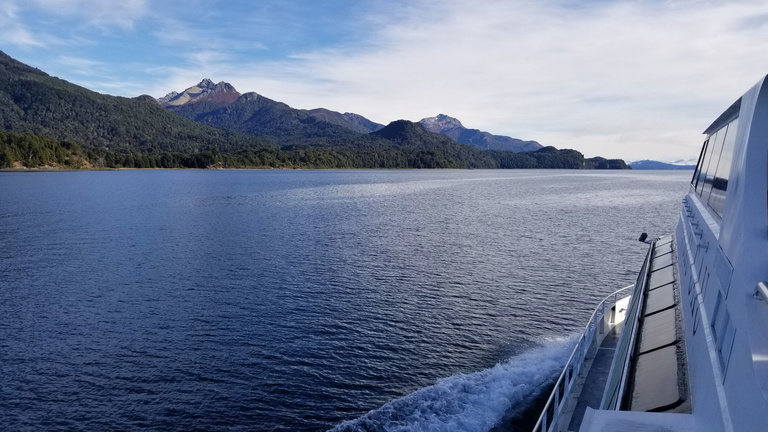
Catamaran in Nahuel Huapi Lake on the way to the Arrayanes forest.
There happened to be a huge chocolate festival in Bariloche while we were there for Easter week. The last whole day in the city, we witnessed the largest bar of chocolate made in the world at 656 feet running down the main street. Bariloche is well known for its artisan chocolate because of its history of German-speaking immigrants. We ate plenty of chocolate and bought some as gifts before heading home.

The beach right off downtown Bariloche.
Having visited Bariloche, I would strongly recommend it. I liked it so much, on the second day there, I had already thought about what it would be like to live there. There are so many places to visit in southern South America, but Bariloche is one that must be on the travel bucket list.
Check out more photos from Zane's amazing trip.

Zane Johnson is a biomedical engineering major and Spanish minor at the University of Iowa. He is spending his semester in Uruguay on the USAC Montevideo program.